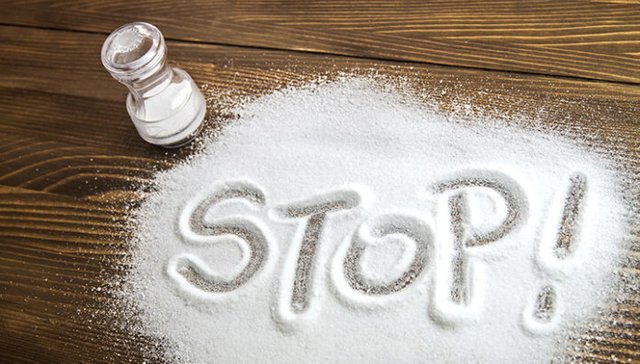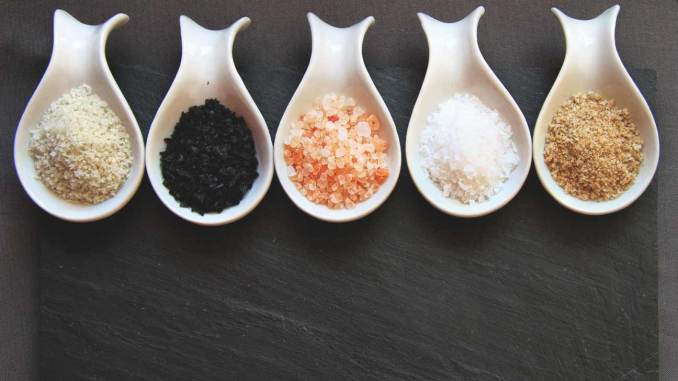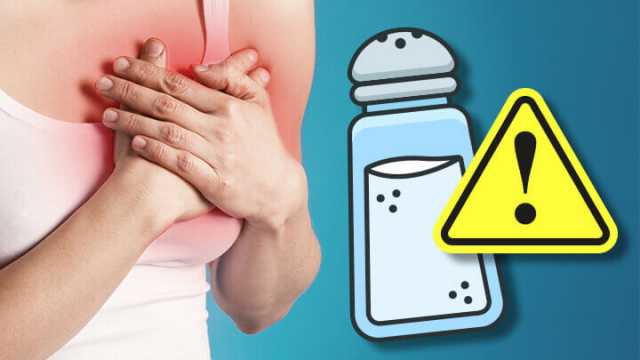Experts hope it can curb the health effects of excess sodium consumption—but it’s not as simple as shelving your shaker.
- The World Hypertension League wants to add warning labels to salt shakers, according to a recent position statement published in the Journal of Clinical Hypertension.
- The goal of the labels would be to raise awareness of dangers of high sodium intake.
- A diet high in sodium is linked to high blood pressure, which ups the risk of stroke and heart attack.
Your salt shakers may come with a warning label—at least that’s the hope of the World Hypertension League.
Cigarettes come with warnings on the health effects of smoking, and some experts believe that salt shakers should follow suit, as excess consumption of sodium has been associated with a number of health issues, according to a recent statementpublished in the Journal of Clinical Hypertension.

Eating too much sodium has been linked with high blood pressure, which ups a person’s risk of early death from stroke or heart disease. It is also a probable cause of stomach cancer, directly causes cardiovascular and kidney damage independent of blood pressure, and is associated with several other diseases, Jacqui Webster, P.h.D., director of the World Health Organization Collaborating Centre on Population Salt Reduction at the George Institute for Global Health told Runner’s World.
That’s why experts recommend that all governments require health warnings on packages of salt sold for consumption in stores and in salt shakers in restaurants. An example of such a warning label would read: “Too much sodium in the diet causes high blood pressure and increases risk of stomach cancer, stroke, heart disease and kidney disease. Limit your use.”
The thinking behind adding warning labels to salt shakers is that it would increase awareness of the dangers of high-sodium intake when people buy salt, and continue to serve as a reminder when people see the containers at stores, restaurants, or at home, explained Webster. Stores that sell salt may also choose to display it less prominently.
“It is hoped that displaying a clear warning label on packages of salt sold in supermarkets and on salt containers in restaurants will have a significant impact on sodium consumption, thereby reducing rates of ill health,” Webster said.
[Build a killer midsection in the kitchen for effortless miles on the road with Eat for Abs!]
While cutting down on added salt is definitely a good initiative, you are not in the clear sodium-wise even if you stop sprinkling on the white stuff. That’s because the vast majority of the salt Americans consume tends to be found in food. In fact, according to the Centers for Disease Control and Prevention (CDC), 77 percent of the sodium Americans consume is hidden in processed foods or foods at restaurants. Just 10 percent of the salt in our diets comes from that which added during cooking or sprinkled on at meals, one WHO report found.

Added salt can be found in everyday packaged and processed products, ranging from pasta sauces to readymade meals to dips and crackers to processed meats. While many of these products have nutrition labels that include sodium, they are not always clear enough or sufficiently visible to help consumers make an informed choice.
“We’d like to see simpler, more prominent information on these products but also to see manufacturers making more effort to reduce the levels of sodium contained in these products,” Webster said.
Several countries already require warning labels on processed foods with high sodium content. For example, in Finland, packaged foods with high sodium content has been required to carry a warning label since 1993, which contributed to a reduction in the sodium content of packaged foods, lower salt intakes in general, and lower blood pressure, said Webster.
“In addition to tighter controls around sodium labeling, we’d like to see manufacturers reformulating their products to contain less salt—we know it can be done,” said Webster.
Regardless of how the sodium enters our diet, we’re still eating too much of it: The recommended daily dose of sodium is less than 2,300 milligrams (mg) of sodium per day according to the Dietary Guidelines for Americans. However, according tothe CDC, the average daily intake is more than 3,400 mg.
So play a proactive role with your sodium consumption to get your levels down. Cut down on using the salt shaker at meals, but also look to the rest of your diet, too. Eating more fresh foods and reducing your reliance on processed and packaged food is a good way to do this, said Webster.
At the store, look for products labeled “no added salt,” “low salt,” or “reduced salt.” Read the label and check the “per 100 g” sodium level to compare products in the same category to find the version that has the lowest sodium content per serving.
A true love for sports



Recent Comments